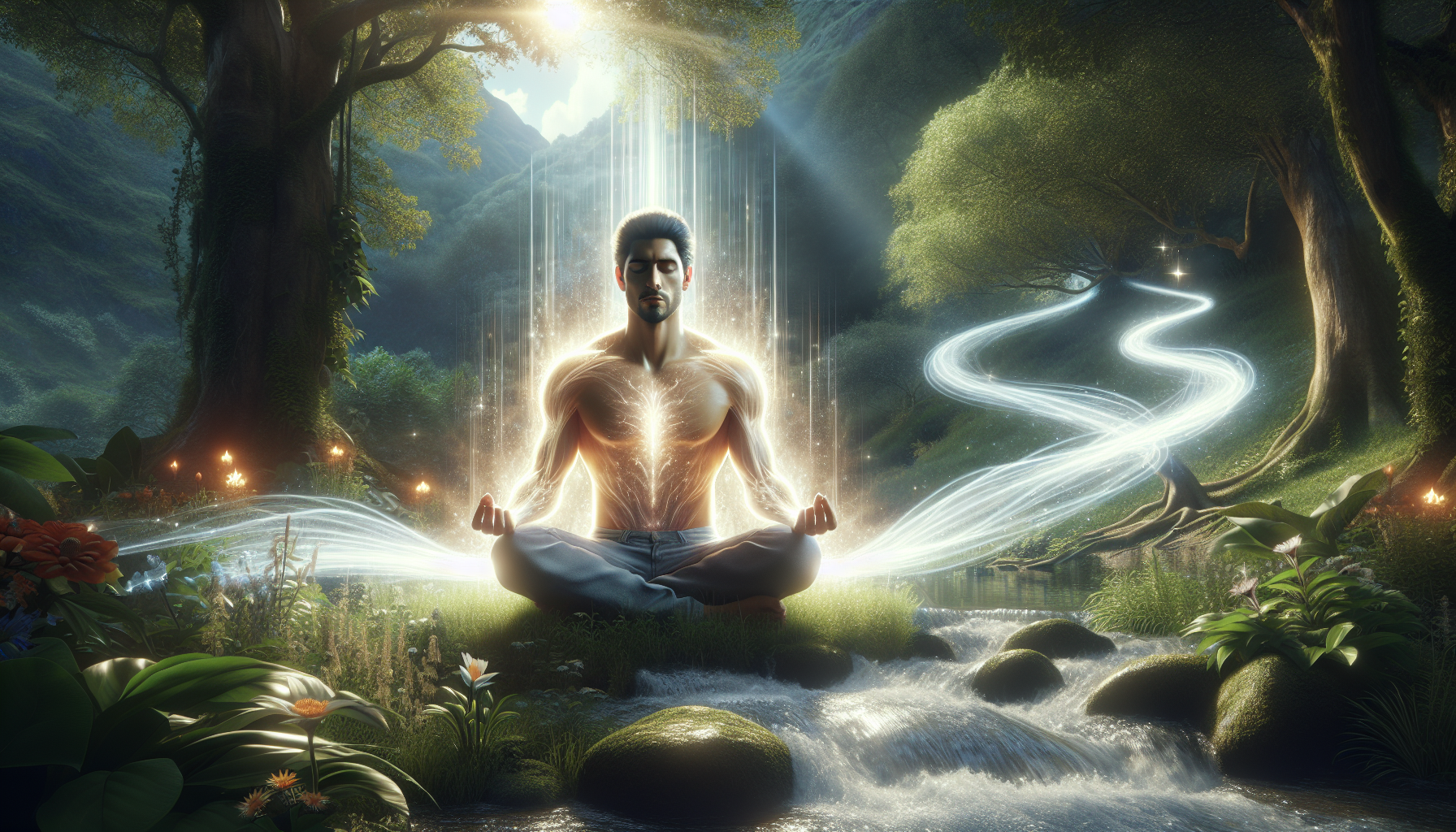In a world where the hustle and bustle of daily life often drowns out the subtle whispers of our inner selves, the quest for understanding the mysteries of life and vitality becomes more pertinent than ever. Imagine, for a moment, a force within you—an enigmatic energy that has been revered, debated, and explored throughout the ages. This force, often referred to as the “life force energy,” is at the heart of the ancient concept of Vitalism. It’s a concept that has inspired healers, philosophers, and scientists alike, inviting us to look beyond the mere physicality of existence and delve into the profound interconnectedness of mind, body, and spirit. 🌿
Vitalism, the belief in a vital force that animates living beings, offers a captivating lens through which we can explore the mysteries of life itself. This ancient philosophy posits that life cannot be fully explained by the mechanical interactions of physical elements alone; instead, it suggests that there is a dynamic, intangible essence that imbues living organisms with vitality and purpose. As we embark on this exploration, we will traverse through the historical roots of Vitalism, examining its evolution from the ancient traditions of Eastern medicine to its intersections with modern scientific thought.
In this article, we will unlock the power within by delving into the core principles of Vitalism and how they resonate with contemporary understandings of health and wellness. We’ll journey through the rich tapestry of history, uncovering how various cultures have perceived and harnessed life force energy in their healing practices. From the qi of Traditional Chinese Medicine to the prana of Ayurveda, we will explore how these ancient systems have sought to balance and enhance this vital energy to promote well-being and harmony.
Furthermore, we will address the ongoing debate between Vitalism and reductionist science, investigating how modern research is beginning to bridge the gap between these seemingly opposing paradigms. By examining case studies and recent scientific discoveries, we’ll uncover how the integration of Vitalism into holistic health approaches is transforming our understanding of medicine and the human experience. So, whether you’re a skeptic or a seeker, prepare to open your mind and heart as we unravel the intricate tapestry of life force energy and its profound impact on our lives. 🌟
Understanding Vitalism: A Historical Perspective
Vitalism, as a philosophical doctrine, posits that living organisms are fundamentally different from non-living entities because they are governed by a different set of principles. This belief in a “life force” or “vital spark” that animates living beings has a rich history, tracing back to ancient civilizations and extending through various cultural narratives across the globe. In ancient Greece, for instance, vitalism was closely linked to the concept of “pneuma” or “breath of life,” believed to imbue life into matter. Similarly, in Eastern philosophies, concepts like “qi” in China and “prana” in India describe this life force as integral to health and well-being.
The 19th century saw a resurgence of interest in vitalism with the rise of biological sciences. At that time, scientists like Hans Driesch and Henri Bergson championed the idea that mechanistic explanations of life were insufficient to account for the complexity of living systems. Driesch, for example, proposed that the behavior of organisms could not be fully explained by physical and chemical laws alone, suggesting the presence of an organizing force he called “entelechy.” This era also saw vitalism becoming a subject of debate and skepticism as the scientific community increasingly favored reductionist approaches, which sought to explain life in terms of physical and chemical processes alone.
Despite the dominance of reductionism, vitalism has persisted, often finding expression in alternative and holistic medicine practices. Homeopathy, naturopathy, and various forms of energy healing continue to emphasize the importance of balancing life force energy for maintaining health. In the context of modern scientific inquiry, vitalism challenges us to reconsider our understanding of what it means to be alive and whether a purely mechanistic view of life is sufficient to explain the complexities of living organisms. By delving into the historical perspectives of vitalism, we can better appreciate its enduring appeal and its potential to enrich contemporary discussions about life, health, and wellness.
The Science of Life Force Energy
Life force energy, often described as an invisible current or vibration that animates all living things, is a concept that transcends cultural boundaries. In scientific terms, it remains a topic of intrigue and exploration. While mainstream science has largely focused on material explanations of life, research into energy fields and their potential impact on health is gaining traction. This inquiry is not without challenges, as measuring or quantifying such energy is complex and often criticized for lacking empirical evidence.
Recent studies have started to explore the potential effects of biofields on human health. These biofields, which are thought to emanate from the body and interact with the environment, may influence physical and emotional well-being. While concrete scientific validation is still in the early stages, the potential implications of understanding life force energy are profound. For instance, practices like Reiki and therapeutic touch are based on the premise of manipulating these energy fields to promote healing. Research into these practices often focuses on their effects on stress reduction, pain relief, and overall well-being, providing some empirical support for the concept of life force energy.
The intersection of quantum physics and biology offers another avenue for exploring life force energy. Quantum biology is an emerging field that investigates the role of quantum phenomena in biological processes. Some researchers speculate that quantum mechanics could help explain how energy at a subatomic level influences biological functions. This approach could potentially bridge the gap between traditional scientific views and vitalistic concepts, offering new insights into how energy might influence life processes.
Comparative Analysis: Mechanistic vs. Vitalistic Approaches
| Aspect | Mechanistic Approach | Vitalistic Approach |
|---|---|---|
| Definition of Life | Life explained through physical and chemical processes | Life imbued with an intrinsic energy or force |
| Focus | Material and empirical evidence | Holistic and often spiritual understanding |
| Applications | Conventional medicine and biology | Alternative medicine and holistic practices |
While both approaches offer valuable insights, the ongoing dialogue between them highlights the complexity of life and the diverse methods humans use to understand it. Each approach offers unique perspectives, and their coexistence encourages a more comprehensive exploration of life and health.
Applications of Life Force Energy in Healing Practices
In the realm of alternative and complementary medicine, life force energy is a central theme in numerous healing modalities. These practices often prioritize the harmonious flow of energy within the body, which is believed to be crucial for maintaining health and well-being. Acupuncture, for instance, is based on the idea of balancing “qi” through the stimulation of specific points on the body. This ancient Chinese practice has gained acceptance in various parts of the world and is often used to address pain and stress-related conditions.
Reiki, a Japanese form of energy healing, involves practitioners channeling energy into a patient to activate the natural healing processes of the body. Advocates of Reiki report benefits such as reduced anxiety, improved relaxation, and enhanced emotional balance. While empirical evidence is still developing, anecdotal reports and small-scale studies have shown positive outcomes, contributing to its growing popularity as a complementary therapy.
The use of life force energy extends to the realm of mind-body practices like yoga and tai chi. These disciplines emphasize the cultivation and balance of internal energy through movement, breath control, and meditation. Yoga, with its roots in ancient Indian philosophy, promotes physical and mental well-being through a series of postures and breathing techniques designed to enhance energy flow. Similarly, tai chi, originating from China, combines slow, deliberate movements with focused breathing to improve vitality and reduce stress.
Case Studies and Real-World Examples
To illustrate the impact of life force energy practices, consider the experiences of individuals who have incorporated these techniques into their lives. For example, a study involving cancer patients undergoing chemotherapy found that those who received Reiki sessions reported a greater sense of relaxation and reduced symptoms of anxiety compared to those who did not. Similarly, individuals practicing yoga regularly have reported improvements in flexibility, stress levels, and overall mood.
While the scientific community continues to explore these practices, the personal experiences of practitioners and patients highlight the potential benefits of incorporating life force energy concepts into holistic health approaches. As research progresses, it may offer more concrete evidence to support the efficacy of these practices and further illuminate the mysteries of life force energy.
To deepen your understanding, consider watching this insightful video: “Understanding Life Force Energy” – Channel: Life Energy Insights. It provides a visual explanation of how energy healing practices function and their potential benefits.

Conclusion
In wrapping up our exploration of vitalism and the enigmatic life force energy, we’ve embarked on a journey through a fascinating and often misunderstood realm of thought. Vitalism, with its roots deep in the history of medicine and philosophy, proposes that life is driven by a special energy or force that cannot be entirely explained by physical or chemical processes alone. This journey has taken us through various perspectives, historical contexts, and contemporary applications, highlighting the enduring intrigue surrounding this concept.
Firstly, we examined the origins of vitalism, tracing back to ancient philosophies that recognized a distinct life force in all living beings. These early theories laid the groundwork for a belief system that viewed life as more than a mere mechanical process. We explored how these ideas evolved through the centuries, influencing both scientific inquiry and holistic approaches to health and well-being.
One of the key points discussed was the integration of vitalism into modern complementary and alternative medicine practices. Many holistic therapies, such as acupuncture, Reiki, and Ayurveda, draw upon the principles of life force energy to promote healing and balance within the body. This reflects a growing recognition of the interconnectedness of mind, body, and spirit, and the potential for these therapies to complement conventional medical treatments.
Furthermore, we delved into the scientific scrutiny and debate surrounding vitalism. While mainstream science often emphasizes reductionist approaches, there is an increasing openness to exploring phenomena that transcend current scientific understanding. Researchers are beginning to investigate the physiological effects of practices like meditation and energy healing, seeking to bridge the gap between traditional beliefs and empirical evidence.
The significance of vitalism extends beyond health and wellness. It invites us to consider broader existential questions about the nature of life and consciousness. As we grapple with these mysteries, vitalism encourages a holistic perspective, acknowledging the unseen and intangible aspects of existence that contribute to the richness of life.
In essence, vitalism challenges us to rethink our understanding of what it means to be alive. It calls us to appreciate the subtle energies that may influence our physical and mental states, urging us to embrace a more integrative approach to health and personal development. The allure of vitalism lies not only in its historical significance but in its potential to inspire a more harmonious and balanced way of living.
As we conclude this exploration, it is essential to recognize the importance of keeping an open mind and fostering a sense of curiosity. Whether you are a skeptic or a believer, the study of vitalism and life force energy offers valuable insights into the complexities of life. It encourages us to seek connections between ancient wisdom and modern science, paving the way for innovative approaches to understanding health and well-being.
We invite you, dear reader, to reflect on the themes discussed and consider how they might resonate with your own experiences. Share your thoughts, engage in conversations, and explore the various practices that draw upon the principles of vitalism. In doing so, you contribute to a broader dialogue that embraces both the known and the unknown aspects of life.
Feel free to dive deeper into this intriguing subject by accessing resources such as the National Center for Complementary and Integrative Health and exploring studies available through PubMed. These platforms offer a wealth of information and research that can further illuminate the concepts discussed.
In closing, let us embrace the mysteries of life force energy with a sense of wonder and exploration. As we unlock the power within, may we find inspiration and empowerment in the interconnectedness of all living things, leading to a more enriched and vibrant existence. 🌟
Thank you for joining us on this journey. We look forward to hearing your insights and experiences. Share this article with friends and colleagues who might find value in it, and together, let’s continue to explore the wonders of life and the energies that animate it.
Toni Santos is a visual storyteller and conceptual archivist whose work explores the curious, often poetic ruins of pseudoscience and obsolete theories. With a reverence for forgotten frameworks and fantastical logic, Toni illuminates the imaginative spaces where science once drifted into myth, speculation, and symbolic belief.
His creative path is rooted in a fascination with the fringe — from phrenology maps to ether diagrams, hollow earth charts to animal magnetism illustrations. Each visual Toni creates or curates is an invitation to reexamine the strange beauty of discarded knowledge — not as failure, but as cultural reflection, as art born from our eternal desire to explain the unexplainable.
Blending visual design with historical inquiry, Toni gives new life to lost diagrams, metaphysical charts, and antique engravings that once shaped worldviews. His work occupies the liminal zone between fact and fiction, where obsolete models still pulse with philosophical resonance and forgotten charm.
As the mind behind Vizovex, Toni shares illustrated essays, curated collections, and visual reinterpretations that invite others to explore the aesthetic and symbolic value of outdated theories. His goal is not to validate, but to remember — to view these speculative systems as relics of human creativity, vulnerability, and yearning.
His work is a tribute to:
The elegance of error in the evolution of knowledge
The symbolic artistry of discarded explanations
The blurred lines between belief, observation, and imagination
Whether you’re a collector of curious ideas, a lover of forgotten diagrams, or someone drawn to the strange scaffolding of old worldviews, Toni opens a portal to a time when the universe was still full of ghosts, humors, and cosmic fluids — one chart, one symbol, one discredited wonder at a time.





